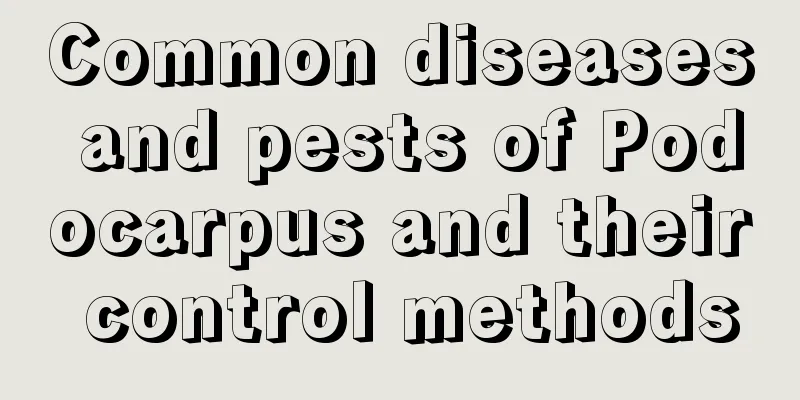Common diseases and pests of Podocarpus and their control methods

Leaf spotSymptoms: There are oval and long light reddish-brown spots on the leaves, surrounded by chlorotic circles, which later expand into large irregular patches with black spots on them. Prevention and control methods: Remove diseased leaves and spray pesticides in time. It can be sprayed with 500 times diluted 50% thiophanate wettable powder. anthraxSymptoms: Small brown spots appear on the leaves at the early stage of the disease, which then expand into round or oval shapes. The spots gradually dry up, and in severe cases the entire plant is infected. Prevention and control methods: First, open the windows for ventilation to reduce indoor air temperature and humidity. Then spray with 1000 times diluted 70% methyl thiophanate wettable powder, or spray 70% methyl thiophanate 60% anthrax, fumei, multi-bacterium, etc. to prevent the disease from spreading further. Red SpiderSymptoms: Podocarpus is attacked by red spider mites, its leaves fade, its chlorophyll is destroyed, dense small yellow spots and yellow spots appear on the surface, and they gradually shrink, turn yellow, and wither. In severe cases, they fall off and lose their ornamental value. Prevention and control methods: Red spiders often hide on the back of branches, leaves or in densely covered areas. It is easier to catch them manually by using a net. If chemical agents are used for treatment, you can use 20% trichloronate emulsion, add 800-1000 times water, make a solution for spraying. This drug has a good killing effect on adults, nymphs and eggs. You can also add 1000-1500 times the amount of DDT emulsion into water to make a solution for spraying. Scale insectsSymptoms: The damage is widespread, sucking the juice from stems and leaves, causing poor plant growth, and even inducing sooty mold, causing large-scale damage to the leaves. Its peak period is earlier than that of red spider mites, and it often reproduces in large numbers in early spring. Prevention and control methods: When the number is small, use a brush to remove it. In addition, you can also use 800-1000 times diluted Supusha for spraying. Mixing a certain amount of furadan into the culture soil has a preventive effect, but the efficacy is only three months. |
<<: Diseases and prevention methods of cockscomb
>>: Lupine Diseases and Prevention Methods
Recommend
Can it snow in May? If you grow this kind of flower at home, you will immediately have a sea of white flowers!
The tassel tree covered in silver The tree that a...
How is the profit per mu of Schisandra chinensis? How much is the profit per mu of Schisandra chinensis?
Schisandra chinensis has a very high yield and a ...
The steps and precautions for planting keel
Dragon bone is a flower that is relatively easy t...
How to grow green radish more vigorously in summer?
Many people like to grow pothos at home. This pla...
How many years does the red fruit tree bear fruit?
The red fruit tree has been planted for several y...
When is the right time to sow onion orchid?
Time to sow leek Allium macrostemon generally ref...
How to make bananas, how to make crispy bananas
1. How to do it There are many ways to cook and e...
How many years does it take for mulberry to bear fruit?
Introduction to Mulberry Planting When planting m...
Is it good to keep jasmine at home? (with recommendations for plants with good feng shui)
1. Is it good to keep it at home? In some places,...
The efficacy and function of Hanxincao
Antibacterial effect This is easy to understand. ...
What are the new varieties of citrus?
1. Red Beauty This variety is a popular variety n...
Cinnamon benefits, how to eat cinnamon
1. Efficacy 1. Help lose weight: In daily life, m...
Do hydrangeas prefer large or small pots? Which pot is suitable?
The best pots for hydrangeas are ceramic pots, pu...
Cultivation methods and precautions of blue snowflakes
Blue snow flower is a very beautiful flower . Its...
Can chayote seeds be planted?
Can chayote seeds be planted? Chayote seeds can b...









